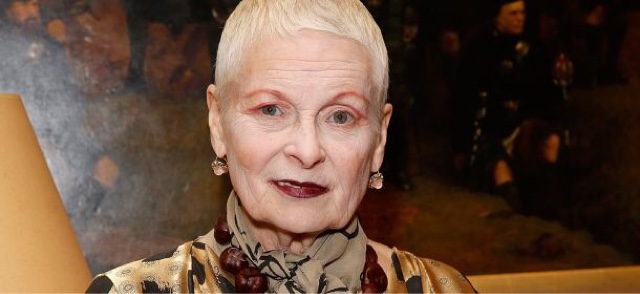Dame Vivienne Westwood, DBE, RDI(born Vivienne Isabel Swire on 8 April 1941) is a British fashion designer and businesswoman, largely responsible for bringing modern punk and new wavefashions into the mainstream.[1]
Westwood came to public notice when she made clothes for Malcolm McLaren's boutique in the King's Road, which became famous as "SEX". It was their ability to synthesise clothing and music that shaped the 1970s UK punk scene, dominated by McLaren's band, the Sex Pistols. She was deeply inspired by the shock-value of punk—"seeing if one could put a spoke in the system".
Westwood went on to open four shops in London, eventually expanding throughout the United Kingdom and the world, selling an increasingly varied range of merchandise, some of it linked to her many political causes such as the Campaign for Nuclear Disarmament, climate change and the civil rightsgroup Liberty. She has been twice married, and has two children
When she met Malcolm McLaren, it meant the end of Westwood's marriage to Derek. Westwood and McLaren moved to a council flat in Clapham. Westwood continued to teach until 1971 when McLaren opened a boutique at 430 King's Road called "Let It Rock" (later known variously as "Sex", "Too Fast To Live Too Young To Die", and "Seditionaries") and now Worlds Ends, where Westwood sells her Vivienne Westwood label clothing.
Westwood created clothes which McLaren conceived, drawing inspiration from bikers, fetishists and prostitutes.[7]During this period, McLaren became manager of the punk band, the Sex Pistols, and subsequently the two garnered attention as the band wore Westwood's and McLaren's designs. In 1967, while living in Clapham, Westwood and McLaren had a son, Joseph Corré.[8]
Punk era
Westwood was one of the architects of the punk fashion phenomenon of the 1970s, saying "I was messianic about punk, seeing if one could put a spoke in the system in some way".[6] The "punk style" included BDSM fashion, bondage gear, safety pins, razor blades, bicycle or lavatory chains on clothing and spiked dog collars for jewellery, as well as outrageous make-up and hair. Essential design elements include the adoption of traditional elements of Scottish design such as tartan fabric. Among the more unusual elements of her style is the use of historical 17th- and 18th-century cloth-cutting principles, and reinterpreting these in, for instance, radical cutting lines to men's trousers. Use of these traditional elements make the overall effect of her designs more "shocking".[citation needed]












